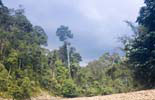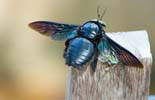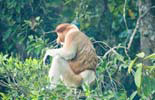 |
 |
 |
Brunei
While the rest of Borneo is losing its forests faster than any other region of tropical rainforest on the planet, Brunei, which comprises less than 1% of Borneo, has accomplished what few other governments have imagined by setting aside more than 56% of the country's 577,000 hectares as protected area, the inspired vision of the Sultan of Brunei. From the perspective of native biodiversity, that protective umbrella is critical. Research at the Kuala Belalong Rainforest Field Studies Centre in Ulu Temburong National Park has shown that a single tree may harbor 400 different species of beetle. Mammalian diversity is also enormous. Since 1984, at least 90 mammalian species have been identified here, including the spectacular Proboscis Monkey (Nasalis larvatus) in the adjacent Southwestern Belait District and along the Limbang mangroves. Present in greater abundance than anywhere else in Borneo are leaf monkeys (Presbytis hosei) and the tailless Bornean Gibbon (Hylobates muelleri), as well as the Silvered Langur (Presbytis cristata). Bird, reptile and amphibian diversity is also huge and largely untouched.
It was this intact biological assemblage that was chosen for the DSF Sanctuary book project. Ulu Temburong remains the least disturbed of all rainforest in any of the three "Heart of Borneo" Declaration countries (Brunei, Malaysia and Indonesia).
It is this forest that provides the clearest indication that a wealthy oil-producing nation can help counteract its global greenhouse gasses impact through mitigation by keeping sacrosanct a large proportion of its aboriginal canopy.
Ulu Temburong National Park, Brunei
 |
 |
|
 |
 |

